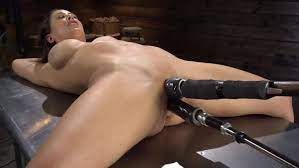Pregnancy is a transformative journey for women, both physically and emotionally. As the body goes through various changes, seeking comfort and relaxation is natural. One popular question during this time is whether getting a massage while pregnant is safe.
In this article, we will explore the benefits of prenatal massage, discuss the precautions to take, address common concerns and misconceptions, recommend suitable types of massage, and identify situations when massage should be avoided.
Pregnancy can bring about discomfort such as backaches, joint pain, and swelling, among other issues. When performed by a certified prenatal massage therapist, massage therapy can provide relief and enhance the overall well-being of expectant mothers. However, it’s crucial to understand the precautions and considerations to ensure a safe and comfortable experience.
Benefits of Massage during Pregnancy
Physical Benefits
Massage therapy during pregnancy offers a range of physical benefits. It helps alleviate muscle tension, reduces back and joint pain, improves blood circulation, and eases the discomfort of swollen ankles and legs. Additionally, it can promote better sleep patterns, which are often disrupted during pregnancy.
Emotional Benefits
Pregnancy can bring about emotional stress due to hormonal changes and the anticipation of becoming a parent. Massage therapy offers emotional support by reducing anxiety, depression, and stress levels. It enhances mood and promotes relaxation, allowing expectant mothers to better connect with their changing bodies and the growing life inside them.
Precautions to Take
Before scheduling a massage session during pregnancy, it’s essential to take certain precautions to ensure the safety and well-being of both the mother and the baby.
Consultation with a Healthcare Provider
It is highly recommended to consult with a healthcare provider, such as an obstetrician or midwife, before getting a massage during pregnancy. They can provide personalized guidance based on individual health conditions and any specific concerns.
Choosing a Certified Prenatal Massage Therapist
When seeking a massage therapist, choosing a professional specializing in prenatal massage is crucial. These therapists are trained in techniques suitable for pregnant women and know the contraindications and modifications necessary to ensure a safe and effective massage.
Safe Techniques and Positions
During a prenatal massage, specific techniques and positions are employed to accommodate the changes in the body. It’s important to communicate openly with the massage therapist, informing them about any discomfort or concerns. They can then tailor the massage to address individual needs and preferences.
Common Concerns and Misconceptions
Several common concerns and misconceptions are associated with getting a massage during pregnancy. It’s important to address these to ensure clarity and dispel any unnecessary fears.
Massage and the First Trimester
Many women are unsure if it’s safe to get a massage during the first trimester. If a healthcare provider identifies no complications or risks, massage therapy can be safely enjoyed throughout pregnancy. However, it’s advisable to communicate openly with the massage therapist about the pregnancy stage to ensure appropriate adjustments are made.
Pressure Points to Avoid
Certain pressure points on the body are believed to stimulate labor or cause harm during pregnancy. However, a certified prenatal massage therapist is aware of these points and will avoid them during the massage session. As long as you choose a trained professional, you can have peace of mind knowing that the massage will be tailored to your specific needs.
Recommended Types of Massage
Not all types of massage are suitable for pregnant women. It’s important to choose those that are safe and provide optimal benefits during this special time.
Swedish Massage
Swedish massage is a popular choice for prenatal massage as it focuses on relaxation and easing muscle tension. This gentle, flowing technique enhances circulation and helps reduce pregnancy-related discomfort.
Prenatal Massage
Specifically designed for expectant mothers, prenatal massage incorporates techniques that address the unique needs and changes of the pregnant body. It targets common areas of discomfort and promotes relaxation and well-being.
Side-Lying Position Massage
During pregnancy, lying on the back for extended periods is not recommended. Many prenatal massage therapists utilize the side-lying position to ensure comfort and safety. This position allows for an effective massage while reducing pressure on the abdomen and ensuring proper blood flow to the mother and baby.
When to Avoid Massage?
While massage therapy is generally safe during pregnancy, there are certain situations when it’s best to avoid or postpone a massage session.
High-Risk Pregnancies
If a pregnancy is considered high-risk due to medical or previous complications, it’s essential to consult a healthcare provider before pursuing massage therapy. They can provide guidance based on individual circumstances.
Certain Medical Conditions
Women with specific medical conditions, such as preeclampsia, blood clotting disorders, or gestational diabetes, may need to avoid massage or have certain modifications in place. It’s crucial to inform the massage therapist about any underlying conditions or concerns.
Massage therapy can be a wonderful addition to the self-care routine during pregnancy. When performed by a certified prenatal massage therapist and with proper precautions, it offers numerous benefits for both the physical and emotional well-being of expectant mothers.
Always consult with a healthcare provider, choose a qualified professional, and communicate openly about any concerns to ensure a safe and enjoyable massage experience.
FAQs
Q1: Can massage induce labor during pregnancy?
A: No, a standard prenatal massage is unlikely to induce labor. The techniques focused on relaxation and relieving discomfort rather than stimulating labor.
Q2: Is it safe to get a massage during the first trimester?
A: If a healthcare provider identifies no complications or risks, getting a massage during the first trimester is generally safe. However, always communicate openly with the massage therapist about your pregnancy stage.
Q3: Can I receive a massage if I have back pain during pregnancy?
A: Yes, massage therapy can help alleviate back pain during pregnancy. However, choosing a certified prenatal massage therapist who can apply suitable techniques and positions for your comfort and safety is essential.
Q4: Are there any pressure points to avoid during a prenatal massage?
A: A certified prenatal massage therapist knows pressure points to avoid during a prenatal massage. By choosing a trained professional, you can rest assured that your massage will be safe and tailored to your needs.
Q5: Can massage help with pregnancy-related swelling?
A: Yes, massage therapy can help reduce swelling during pregnancy by improving blood circulation and lymphatic flow. However, always consult a certified prenatal massage therapist to ensure the techniques used to suit your specific condition.












+ There are no comments
Add yours